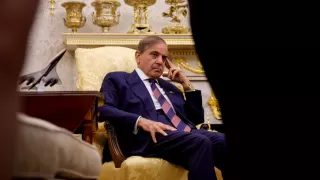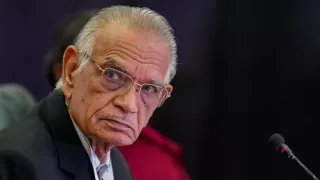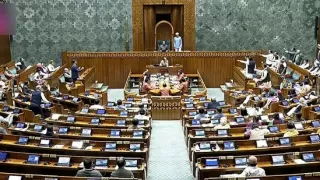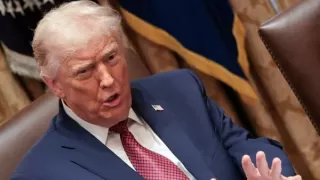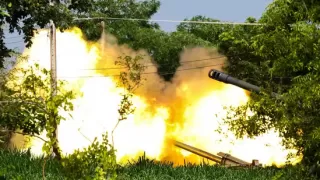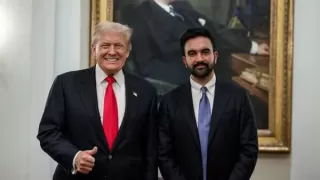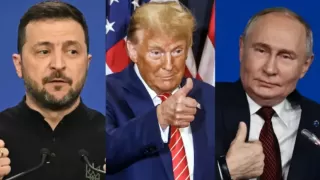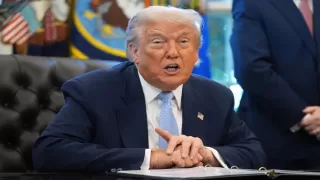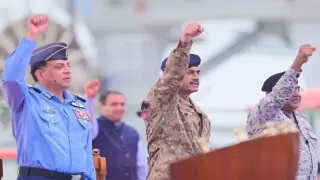India and the United States on Friday signed a landmark 10-year framework agreement aimed at deepening defence collaboration, following a highly productive meeting in Kuala Lumpur, Malaysia. The agreement was formalised during discussions between Defence Minister Rajnath Singh and US Defence Secretary Peter Hegseth, marking a new chapter in strategic cooperation between the two democracies. The meeting took place on the sidelines of the ASEAN Defence Ministers' Meeting (ADMM) and ADMM-Plus engagements, underscoring the growing importance of multilateral cooperation in maintaining peace and stability across the Indo-Pacific region.
The long-term defence pact comes at a time of rising geopolitical tensions and evolving global alignments. The US has recently imposed a 50% tariff on Indian goods, citing India’s continued energy trade with Russia. Yet, despite these challenges, the new framework demonstrates the resilience of the India-US partnership. Rajnath Singh called the agreement “a milestone in mutual trust and a signal that our strategic partnership continues to grow stronger.”
Speaking after the signing, the Defence Minister emphasised that this 10-year framework will not only boost bilateral defence ties but also facilitate closer cooperation in intelligence sharing, technology transfer, and joint research initiatives. “Defence remains a cornerstone of our partnership. This pact will help shape a free, open, and rules-based Indo-Pacific,” he added. Hegseth echoed similar sentiments, noting that “the India-US defence partnership is essential for maintaining regional stability and countering threats from authoritarian regimes.”
The 10-Year Framework: A Strategic Leap Forward
The newly signed agreement is being described by officials as an all-encompassing framework covering areas such as joint military exercises, intelligence cooperation, and joint production of advanced defence systems. It will serve as a roadmap for the next decade, strengthening military interoperability and boosting defence innovation through private sector collaboration in both nations.
According to sources within India’s Ministry of Defence, the agreement builds upon the foundations laid by earlier initiatives such as the Logistics Exchange Memorandum of Agreement (LEMOA), the Communications Compatibility and Security Agreement (COMCASA), and the Industrial Security Agreement. However, this new 10-year plan expands the scope by including space, cybersecurity, and artificial intelligence as key domains of cooperation.
In his remarks, Rajnath Singh stated that the framework aims to transform India into a key player in global defence manufacturing. “The next decade will witness the rise of an Atmanirbhar (self-reliant) India in defence production, supported by trusted partners like the United States,” he said. The minister also confirmed that discussions are underway to co-develop next-generation drones, fighter jet engines, and maritime surveillance systems.
Regional Context: Balancing Power in the Indo-Pacific
The agreement holds particular significance against the backdrop of increasing Chinese assertiveness in the South China Sea and its growing military presence in the Indo-Pacific. Both India and the US view the region as crucial for global trade, maritime security, and freedom of navigation. The defence pact is expected to strengthen the Quad alliance, which includes Japan and Australia, and ensure that no single power dominates the Indo-Pacific waters.
Peter Hegseth reiterated the importance of maintaining open sea routes and promoting collective security. “Our commitment to a secure Indo-Pacific is unwavering. Together with India, we aim to deter coercive tactics and preserve peace,” he said. Analysts believe this agreement will serve as a counterbalance to China’s Belt and Road Initiative (BRI) and its military expansion in Southeast Asia.
Meanwhile, the ASEAN Defence Ministers’ Meeting (ADMM) served as an important venue for discussing regional issues. The ADMM-Plus format—comprising ASEAN nations and dialogue partners such as India, the US, China, Japan, and Russia—provides a crucial platform for fostering defence diplomacy. India’s participation reaffirms its commitment to the “Act East Policy,” designed to build stronger ties with Southeast Asian nations.
China’s Reaction: Calls for ‘Trust and Stability’
China, unsurprisingly, reacted cautiously to the developments in Kuala Lumpur. During a separate meeting, Chinese Defence Minister Dong Jun urged his US counterpart to “enhance trust and dispel uncertainty.” According to China’s defence ministry, Dong emphasised the need for dialogue over confrontation and encouraged both sides to “explore the right way to get along.”
However, Chinese state media outlets expressed concern over the growing military coordination between India and the US, interpreting the deal as an attempt to contain Beijing’s influence in the Indo-Pacific. The ministry’s statement further added that “the unification of the two sides of the Taiwan Strait is an irreversible historical trend,” reiterating China’s position on Taiwan amid increasing US engagement with Taipei.
Observers suggest that China’s response reflects its anxiety about India’s growing alignment with Western powers. As one analyst noted, “The India-US partnership represents a significant realignment in Asia’s strategic landscape—one that Beijing cannot ignore.”
Trade Frictions: The Other Side of the Story
Despite strong defence cooperation, economic relations between India and the US have witnessed new challenges. President Donald Trump’s administration recently imposed heavy tariffs on Indian exports, claiming unfair trade practices and New Delhi’s continued purchase of Russian oil. India, on the other hand, defended its energy policies, saying they are based on national interest and energy security.
Experts argue that while these trade tensions may cause friction, they are unlikely to derail the broader strategic partnership. The 10-year defence agreement underscores that both nations are willing to compartmentalise disagreements and focus on shared goals—such as counterterrorism, regional stability, and technological cooperation.
Indian officials also hinted that the new framework could pave the way for greater US investment in India’s defence sector. “We see this as an opportunity to strengthen our industrial base and create jobs while enhancing self-reliance,” said a senior defence spokesperson.
Expanding Defence Cooperation Beyond Borders
The framework also envisions deeper collaboration in joint training and multinational exercises. Both countries have agreed to increase the frequency of naval and air drills in the Indian Ocean and Pacific regions. The annual “Yudh Abhyas” and “Malabar” exercises are expected to include more advanced weapon systems and cyber warfare simulations.
Additionally, India and the US are working to create an ecosystem that facilitates the exchange of defence startups, research institutions, and universities. This initiative aims to bring private sector innovation into mainstream defence production, focusing on technologies like drones, space defence, and quantum communication.
- Co-development of next-generation defence technologies
- Increased frequency of joint military exercises
- Strengthened maritime security operations
- Collaboration in AI, space, and cyber defence
- Support for indigenous defence manufacturing in India
Looking Ahead: A Decade of Partnership
As both sides move forward with this framework, analysts expect the next decade to redefine India-US defence relations. The focus will likely be on building interoperability, sharing best practices, and jointly addressing emerging threats like cyber warfare, terrorism, and climate-related security risks.
Rajnath Singh concluded his address in Malaysia by stating, “The 10-year agreement is not just a document—it’s a vision. A vision of two great democracies standing together for peace, prosperity, and the protection of global order.”
For the United States, the agreement represents a crucial step in consolidating its network of democratic allies in Asia. For India, it marks another stride toward strategic autonomy while strengthening its defence capabilities with cutting-edge technology and global partnerships. As the world navigates an era of shifting alliances, the India-US defence pact could well become a defining pillar of 21st-century geopolitics.
Also Read: Rohit Arya: Shocking Story Behind Mumbai Hostage Drama






